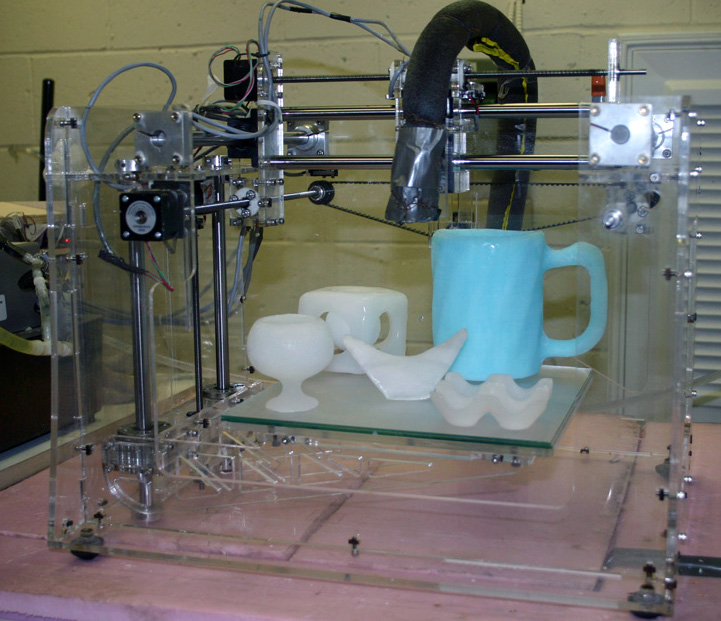 We know it’s spring and things are warming up (at least on the top side of our planet), but it’s time to talk about ice. Specifically, ice printing. Along with numerous other print materials, plain water can now be added to the list.
We know it’s spring and things are warming up (at least on the top side of our planet), but it’s time to talk about ice. Specifically, ice printing. Along with numerous other print materials, plain water can now be added to the list. The “computer assisted ice printing” experiment was developed by professors and students at Montreal’s McGill University to investigate “computer-controlled techniques for constructing objects at varying scales out of ice.”
Their technique was to modify a standard Fab@Home Model 1 to print ice. Specifically they modded the following:
- The replacement of the syringe assembly with a valve/nozzle deposition system
- The installation of a temperature-controlled heating system for the water delivery lines and the valve/nozzle
- Lubrication of the lead screws and some other components with PTFE grease, which is more suitable for the -20C environment of our freezer
- Installation of the system electronics outside the freezer to ensure more reliable operation
The project was evidently inspired by growing interest in outdoor ice buildings. We’ve all heard of the ice hotel in Scandinavia, but ice festivals around the world involve construction of not only buildings, but sculptures too. All of which is done entirely in conventional ways. But what if you could do this automatically? Somehow we like the vision of sipping our hot chocolate while observing the 3D ice printer outside busily depositing ice layers through a window.
One can imagine the McGill technology being adapted for the D-Shape outdoor 3D printer; ice castles and exhibits of unimaginable intricacy would appear. Ice sculpture contests would be decided by 3D modelling skill and traditional ice sculptors wouldn’t have a chance.
The job at McGill was to determine if this was actually possible. Evidently it is possible, based on the photographic evidence above: ice cold beer mugs can indeed be printed. Every ice hotel will soon need one of these in their kitchen!
Via McGill (Hat tip to Jeffrey)


Well, be careful now, we don’t want to have a macbook frozen in liquid nitro, don’t we?
Well, be careful now, we don’t want to have a macbook frozen in liquid nitro, don’t we?